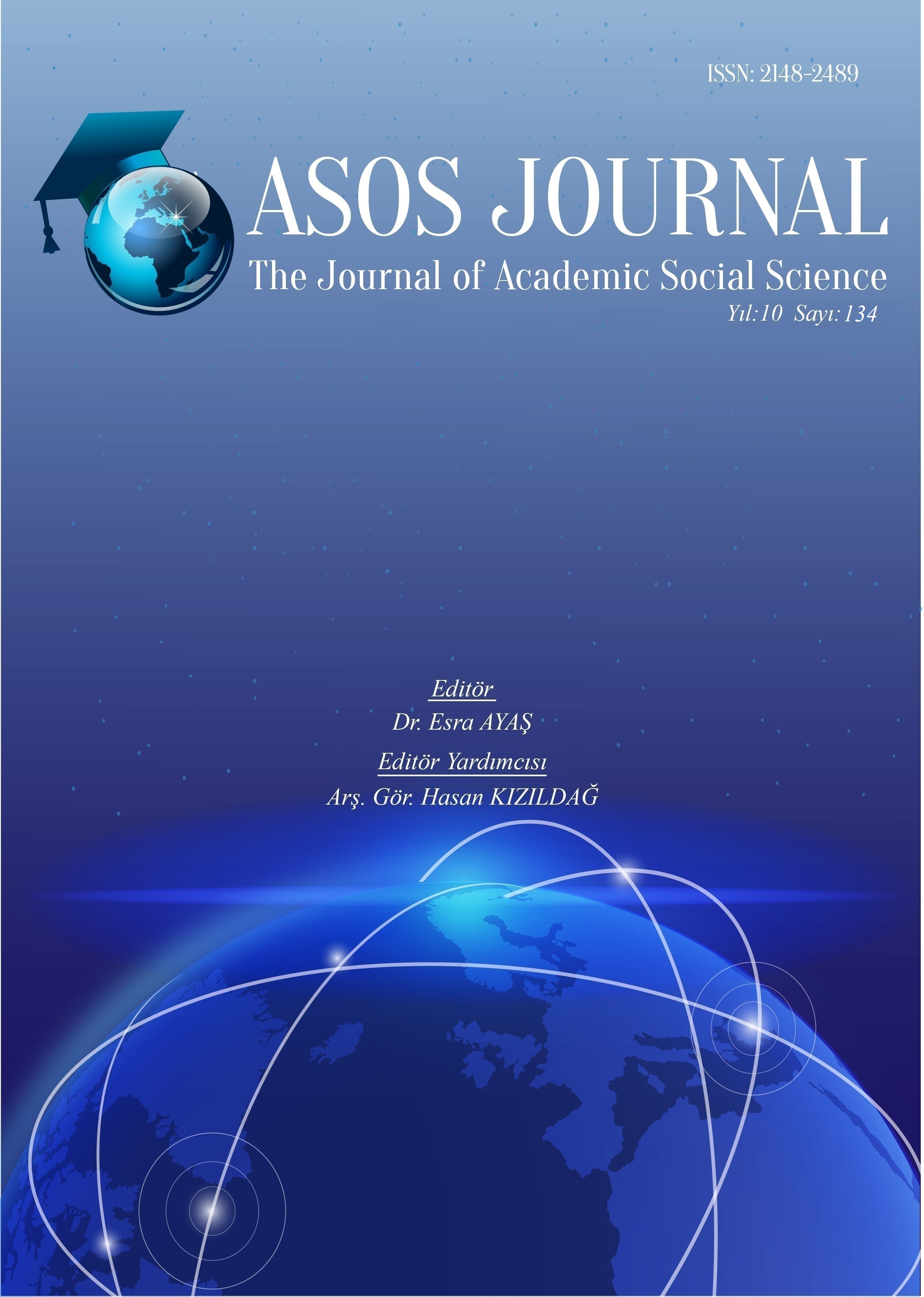YEREL MALZEME İLE ÇAĞDAŞ TASARIM DÜŞÜNCESİNİN OLUŞTURDUĞU BÜTÜNCÜL BİR POSTMODERN MİMARİ ÖRNEĞİ: BURSA ARGUL WEAVE FABRİKASI
Author :
Abstract
İnsanlık tarihinin önemli dönüm noktalarından biri olan postmodernizm (postmodern dönem/çağ/kuram) pek çok bilim insanı tarafından bir önceki dönem olan modernizmden kopuş/ayrılış/reddediş olarak tanımlanmaktadır. 1960’lı yıllarda bir kavram formunda beliren postmodernizm, kendi söylemini ilk kez mimari alanda inşa edilen yapılarda bulmuştur. Bu bağlamda ütopik ve düşsel özlemleri, işlevsel rasyonelliği, teknolojik determinizmi ve estetik farkındalığı ile hem modern mimariyi hem de geleneksel mekânsal hiyerarşileri reddeden postmodernizm, yeni bir kesinlik ve evrensellikle metafiziğin sınırlarını zorlayan bir arayışın ifadesi olarak anlam bulmuş ve bu bakımlardan anlamlandırılmıştır. Pratikte heterojen ve sürekli değişiklik gösteren, zamandan ve uzaydan kopuk birer “zone” gibi girilen yeniçağda yeni mekânların yaratılması, eski yapıların ve şehir dokusunun yanı sıra eski öznellik ve duyarlılıkların silinmesini ve değiştirilmesini de beraberinde getirmiştir. Postmodernizm, kültürel değerleri iletebilen işaret ve sembollerle dolu bir mimariyi savunurken aynı zamanda uyum, yeniden birleşim ve yerel kimlik gibi unsurları da göz önünde bulundurmuştur. Mimarlıkta ve planlamada postmodernizm olgusu, yüzeysel bir üslup meselesi mi yoksa daha temel bir şeyi mi temsil etmektedir? Postmodernizm nedir ve postmodernizm mimari yapılarda nasıl bir tarz yaratmaktadır? Yerel ve kültürel değerler postmodernist mimari eserlere nasıl yansıtılmıştır? Bu sorular bağlamında bu çalışmada Türkiye’de bulunan postmodernist mimari özellikler taşıyan “Bursa Argul Weave Fabrikası”nın postmodernist mimari unsurlar açısından değerlendirilmesini yapmak, söz konusu yapının estetik ve işlevsel yönlerini ortaya çıkarmak hedeflenmektedir.
Keywords
Abstract
Postmodernism (postmodern period/era/theory), which is one of the important turning points in human history, is defined by many scientists as a break/departure/rejection from the previous period, modernism. Postmodernism, which emerged in the form of a concept in the 1960s, found its own discourse for the first time in the buildings built in the field of architecture. In this context, postmodernism, which rejects both modern architecture and traditional spatial hierarchies with its utopian and imaginary aspirations, functional rationality, technological determinism and aesthetic awareness, has found meaning as an expression of a quest that pushes the boundaries of metaphysics with a new precision and universality, and is interpreted in these respects. The creation of new spaces in the new age, which is entered as a "zone" that is heterogeneous and constantly changing in practice and detached from time and space, has brought about the erasure and replacement of old subjectivities and sensibilities as well as old structures and urban texture. Postmodernism advocated an architecture full of signs and symbols that could convey cultural values, while at the same time considering elements such as harmony, reunification, and local identity. Does the phenomenon of postmodernism in architecture and planning represent a superficial matter of style or something more fundamental? What is postmodernism and what kind of style does postmodernism create in architectural structures? How are local and cultural values reflected in postmodernist architectural works? In the context of these questions, in this study, it is aimed to evaluate the "Bursa Argul Weave Factory", which has postmodernist architectural features in Turkey, in terms of postmodernist architectural elements, and to reveal the aesthetic and functional aspects of the structure in question.
Keywords
- Best, S. & Kellner, D. (2011). Postmodern Teori. (Çev. Mehmet Küçük). İstanbul: Ayrıntı Yayınları.
- Brown, B. (2005). The Dark Wood of Postmodernity (Space, Faith, Allegory ), Modern Language Association, 120 (3), 734-750.
- Celebi, E. (2016). Book of Travels (Ottoman Traveler), Bursa chapter, qtd. in “Ottoman Architecture in Bursa,” Republic of Turkey Ministry of Culture and Tourism, Bursa Provincial Directorate of Culture and Tourism. Accessed 12 Aug. 2016.
- Connah, R. (2006). An Unlikely Degree Zero?, Perspecta, Vol. 38, 12-26.
- Coşkun, B. S. & Ötkünç, A. (2017). İstanbul’da Brütalist Bir Yapı: Maruf Önal’ın Kaplancalı Apartmanı. Mimarlık, (397).
- Dostoğlu, N. (1995), “Modern Sonrası Mimarlık Anlayışları”, Mimarlık Dergisi, Ss. 22-28.
- Feyerabend, P. K. (1989). Yönteme Hayır, Bir Anarşist Bilgi Kuramının Ana Hatları, Çev: Ahmet İnam, İstanbul: Ara Yayınları.
- Habermas, J. L. (1994). Postmodernizm. (Haz. Necmi Zeka). İstanbul: Kıyı Yayınları.
- Harvey, D. (2010). Postmodernliğin Durumu. (Çev. Sungur Savran). İstanbul: Metis Yayınları.
- Jacobs, J. The Death and Life of Great American Cities. NY: Random House, 1961.
- Jencks, C. (1991). The Language Of Post-Modern Architecture, Sixth Edition, Academy Editions, London.
- Karasözen, R., Özer, F. (2010). Çağdaş İstanbul Mimarlığında Post-Modernizmin Rasyonel Temeli. İtüdergisi/A, 5(2).
- Le Corbusier & Pierre Jeanneret. (1970). Five Points Towards a New Architecture, 1926. Programs and Manifestos in Twentieth Century Architecture, MIT Press. http://www.learn.columbia.edu/courses/arch20/pdf/art_hum_reading_52.pdf
- Lyotard, J. F. (1990). Post Modern Durum-Post Modernizm, Ara Yayınları, İstanbul.
- Lyotard, J. F. (1997). Postmodern Durum. (Çev. Ahmet Çiğdem). Ankara: Vadi Yayınları
- Momchedjikova, B. (2016). Argul Weave: Local Skills Meet Global Design Practices or Activating Turkey’s Hinterland Potential. Streetnotes, 25.
- Petruccioli, A. (ed.)(1984). Mimar Sinan, the Urban Vision. Journal of the Islamic Environmental Design Research Centre (Rome), p. 9, quoted in FSTC. 10.
- Rabb, P. (2013). We are all servants here!’ Mimar Sinan—architect of the Ottoman Empire in Periodica Polytechnica: Architecture, 44 (1), 17-37.
- Republic of Turkey Ministry of Culture and Tourism: Bursa Provincial Directorate of Culture and Tourism, “Ottoman Architecture in Bursa.” 09.05.2022 http://www.bursakulturturizm.gov.tr/EN,91299/ottoman-architecture-inbursa.html
- Saoud, R. (2007). “Sinan: A Great Ottoman Architect and Urban Designer” in Foundation for Science, Technology, and Civilization (FSTC Limited), June 2007, 1-15.
- Sayar, G. & Yaldız, E. (2016). Modernizmin Mimariye Yansıması Ve 20. Yüzyıl Konya Modern Mimarlığı, Art And Design, 4(4).
- Uluğ, M. (2002). Post Modernizm Bitti Mi?, Tsmd Mimar 3, İstanbul.
- https://www.archdaily.com/548602/argul-weave-binaa-smart-architecture Erişim tarihi: 01.07.2022.
- https://dokmimarlik.com/argul-weave-bilinmeyen-hazine/ Erişim tarihi: 20.06.2022.
- https://escholarship.org/content/qt7p30j74g/qt7p30j74g_noSplash_2d9b47ffb2c88d7461b6ebc4 1e8c8b82.pdf?t=ogbqxt erişim tarihi : 05.07.2022
- https://www.homify.com.tr/yeni_fikirler/23507/tuerkiye-den-2-siradisi-mimari-oernegi erişim tarihi : 05.06.2022.
- http://www.naturadergi.com/ingilizce/argul-weave-a-project-plucking-stone-from-where-it- belongs-to-integrate-it-with-architecure/ erişim tarihi : 05.07.2022.
